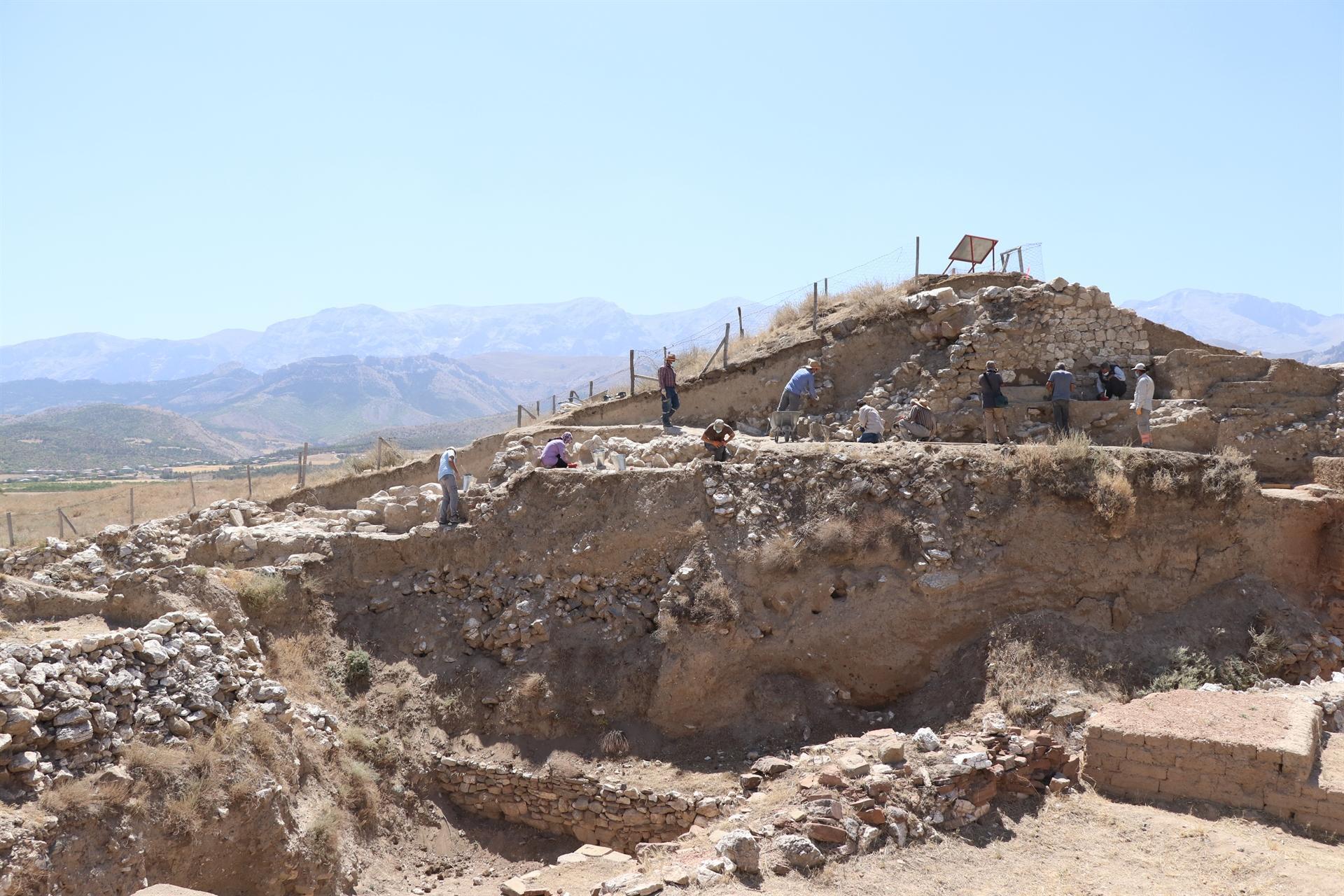
This year’s excavations unearthed the remains of Iron Age walls and plaster at Porsuk-Zeyve Mound, which is located near the village of Porsuk in the Ulukışla district of Niğde and has original Hittite-era adobe bricks and Roman-era living traces.
The works that started in 1968 in the area by the French Archeology Institute continue at the oldest excavation site in Niğde’s Porsuk-Zeyve Mound.
The mound is home to the Hittite hieroglyphs, inscribed on a large sandstone dating to the 8th century B.C., as well as the city walls and watchtowers that served as a garrison in the Hittite period.
Speaking to the state-run Anadolu Agency, The head of the excavations, former Polytechnique Hauts De University Department of History and Classical Archeology Lecturer Claire Barat said that during the excavations two years ago, 2,100-year-old houses, cellars, rooms and storage containers from the Roman period were found in the mound.
Stating that they suspended their work last year due to the pandemic, Barat said, “This year we are excavating Roman houses and Iron Age walls. Porsuk-Zeyve Mound is a very important archaeological site. There are Hittite walls, Iron Age walls, Hellenistic, Roman and Byzantine-period artifacts. This year we found Iron Age walls and the remains of original Iron Age plaster. Now we are working on protection because there is a lot of wind and dust. It snows a lot in winter. That’s why urgent work is needed.”